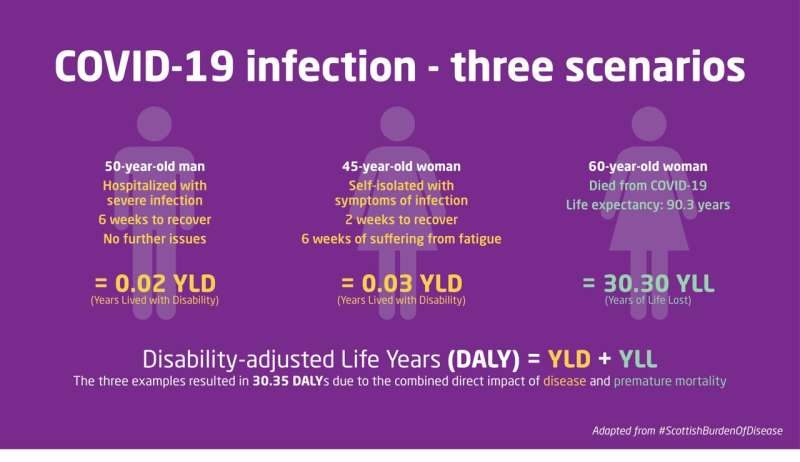Danes lost 30,000 years of healthy life due to COVID-19 in the first year of the pandemic

COVID-19 has had an enormous health impact on societies all over the world. In Denmark, a total of 30,000 healthy years of life were lost as a direct result of the disease according to calculations of the burden of disease from the DTU National Food Institute and the SSI.
The study measured the direct burden of COVID-19 at the population level, taking into account the number of healthy years lost due to premature mortality and disability due to living with acute symptoms of the disease.
"The estimated burden of disease would be even higher if we had included the long-term effects and indirect costs, such as postponed treatments or mental health problems caused by the lockdown. These figures were not available when the study was carried out," says senior researcher Sara Monteiro Pires at the DTU National Food institute.
The researchers have used a protocol for calculating the disease burden of COVID-19, which was developed under the auspices of the European Burden of Disease Network. The DTU National Food Institute and the SSI are part of the network.
High mortality among the elderly but low among the young
To estimate the health impact of a disease, researchers used the metric "disability adjusted life years" (DALY), an overall measure of reduced quality of life and premature death. This metric makes it possible to compare how diseases affect populations in relation to geography, age and mortality.
One pattern that clearly stood out for COVID-19 was a high mortality rate in the 70+ age group and especially among men, while the consequences among the younger part of the population were very small. 447 deaths were registered among the 80-89-year-olds during the period and zero deaths among the 20-29-year-olds.
Important knowledge for authorities
Burden of disease studies provide authorities with comparable estimates of the health impact of various diseases. This is important knowledge to support decisions on health care spending and which efforts will have the maximum impact.
"The calculations we present here are only based on the first year of the COVID-19 pandemic. In the meantime, vaccines, better treatments, and a higher immunity in the population in general have been developed. We therefore expect that we will be able to see a decrease in the burden of disease when we look at the figures for the second year with COVID-19," says Senior Researcher Steen Ethelberg from SSI.
Researchers in other countries have also used the protocol to calculate the health impact of COVID-19. These data make it possible to compare the burden of disease across countries that calculate the disease burden in the same way.
The data show that disease burden for COVID-19 in Denmark amounted to 520 DALYs per 100,000, while the figures for Germany and the Netherlands were 368 and 1570 per 100,000, respectively.
The study was published in the journal BMC Public Health.
More information: Sara M. Pires et al, Disability adjusted life years associated with COVID-19 in Denmark in the first year of the pandemic, BMC Public Health (2022). DOI: 10.1186/s12889-022-13694-9




















